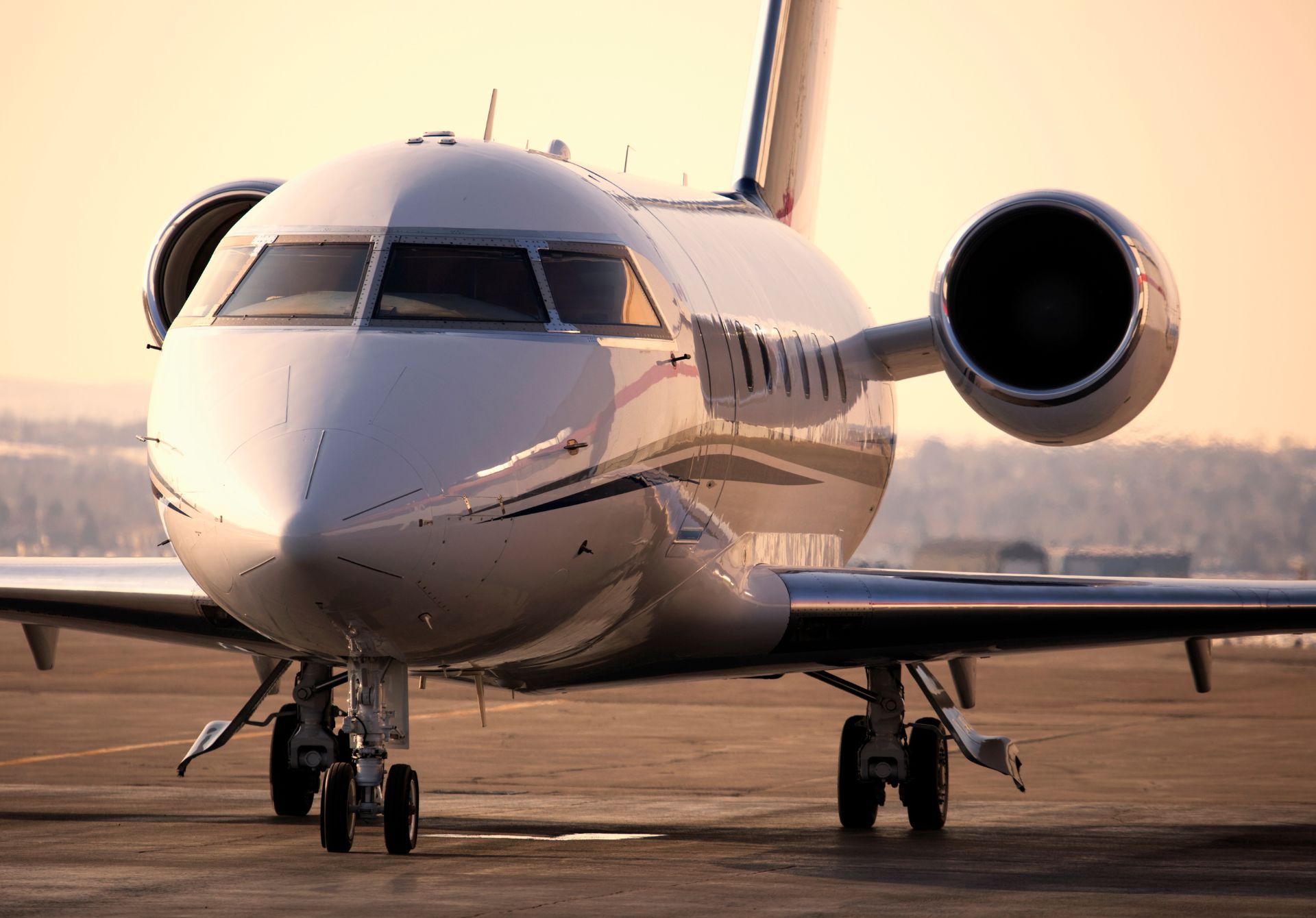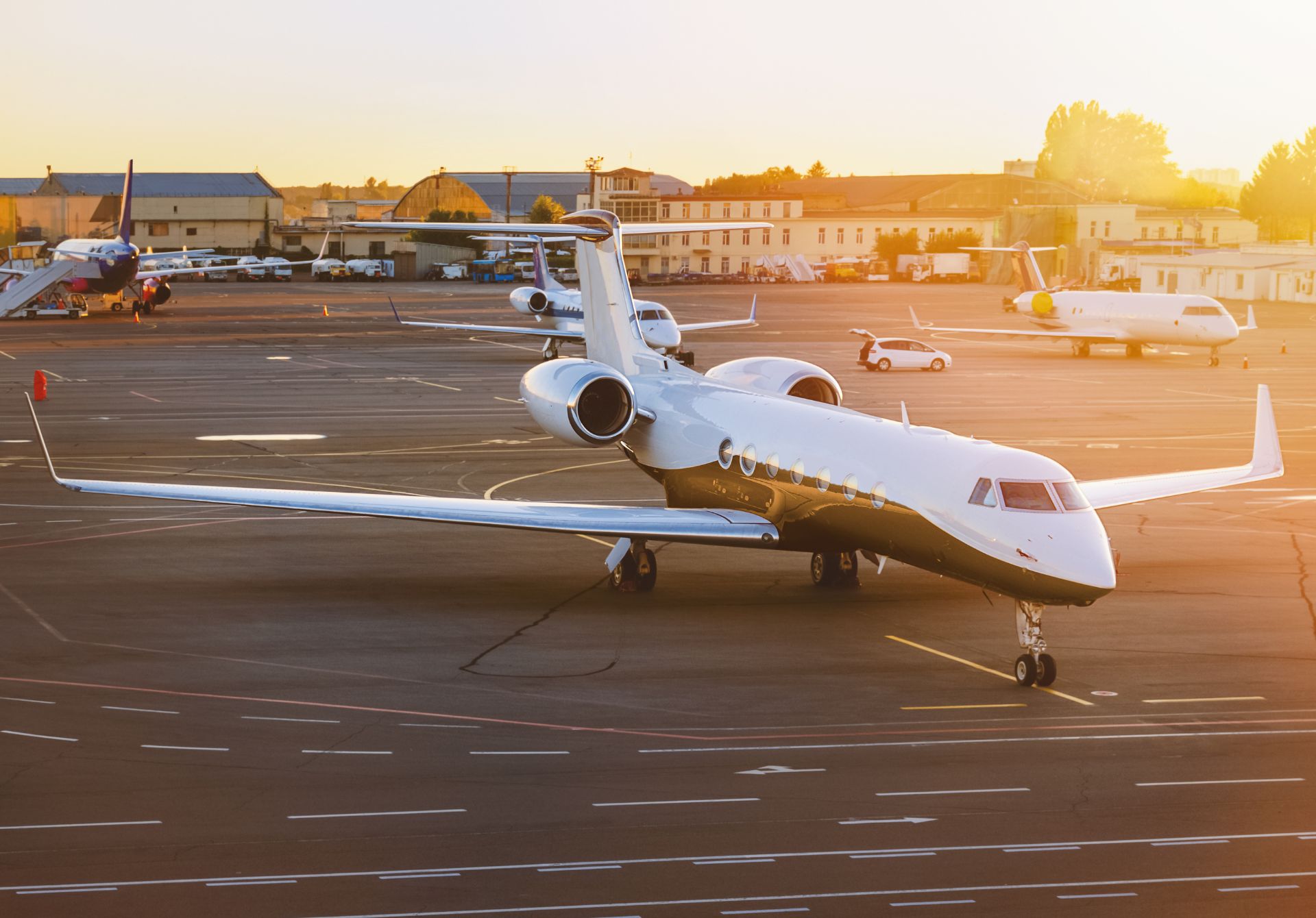The first thing that comes to mind when booking a private jet flight is a smooth flight from beginning to end, without the usual delays on a commercial flight. Even jets are weather-dependent, though. From turbulence to visibility, various conditions can alter a flight’s timing, ease, and even safety. Let’s dive deep into the impacts of different weather on flying a private jet and what you need to know about these effects.
Wind: Tailwinds and Headwinds
Tailwinds make a private jet go faster by pushing the aircraft in that direction, which speeds up the flight and cuts down on fuel. However, headwinds work against the plane, slowing it down and leading to more travel time and more expensive fuel. Private jet pilots might modify a flight path or altitude to catch tailwinds, but they may still affect times and schedules.
Crosswinds can cause problems in some cases, particularly during takeoff and landing. Private jets are typically smaller and lighter than commercial planes, so crosswinds may inconvenience them. While proficient pilots are able to cope with crosswinds with savvy maneuvers, very high winds can result in delays or rerouting for safety reasons.
Turbulence: A Bumpy Ride

Turbulence is among the most frequent weather-related problems any aircraft encounters – including private jets. Turbulence is caused by fluctuations in the wind that can be mild or extreme. Even if it’s not always a direct threat to your safety, it makes the experience unpleasant.
Private jet pilots can also reduce the risk of turbulence more easily than commercial airlines, as they can change altitude or take a different route that might have less turbulent air. The newer private jets even have more advanced avionics to identify zones of turbulence so that pilots can plan accordingly.
In extreme cases, though, turbulence can still retard flights or require intermittent changes in altitude or speed. These might be noticeable for passengers in private jets, but they will be far less prone to lengthy delays.
Thunderstorms: Severe Conditions and Delays
Thunderstorms are one of the main reasons why your private jet might be delayed or canceled. Lightning, hail, and high winds are all common in severe storms and can impose dangers on flying or stationary aircraft. Because private jets tend to fly from small airports without the vast ground infrastructure of a significant hub, they may lack the equipment to deal with extreme weather quickly.
Private jet pilots are the most concerned with their safety and will probably avoid storms by altering their course. Private jets are highly mobile, but thunderstorms — especially those with massive hail or lightning — are usually avoided. Flights may be delayed pending conditions changing or moving to a more secure destination.
Fog and Low Visibility: Navigational Challenges
Flight times, especially takeoff and landing, can be affected by fog, rain, and other low-visibility conditions. Even with the current generation of private jets, which are fitted with high-end navigation and landing equipment, there are still visibility issues to contend with. Almost all smaller airports lack the state-of-the-art Instrument Landing Systems (ILS) of larger commercial airports, and visibility is crucial to landing safely.
Pilots might need to divert to a different, better-viewed airport or wait until the mist clears. Fog, therefore, proves a time-consuming inconvenience for travelers traveling during rush hour. Fortunately, most private jet pilots can change their schedules to fly later when the visibility is predicted to improve, giving them more leeway than commercial flights allow.
Ice and Snow: Winter Weather Hazards
Winter has its own hazards, like ice and snow, which can delay flights and compromise takeoff and landing. Frost on aircraft surfaces also compromises aerodynamics and reduces lift and agility. While most private jets are de-iced before departure, heavy ice accumulations can cause delays as the aircraft undergoes repeated treatments.
However, snow will cause problems on the runway, affecting braking and requiring additional time for plowing and clearing. Private Jet Terminals usually ensure they remove snow first, but sometimes, delays or cancellations occur if safe runway conditions cannot be ensured.
Some private jets mitigate these risks with heated wings and de-icers, which keep critical components of the plane free of ice. The pilots also watch the freezing temperatures closely and steer clear of high snowfall whenever possible. However, when ice and snow are extreme, flights may be rescheduled to ensure passenger and crew safety.
Temperature Extremes: Hot and Cold Weather Effects

Low temperatures also affect private jet performance. On hot days, the air is lighter, which reduces the amount of lift that wings can produce and demands a longer runway for takeoff. The efficiencies may be greater in colder weather, but even low temperatures can impact the jet’s electronics and the airport’s functions. Private jets are built to handle different temperatures, but extreme heat or cold can change takeoff weight restrictions or minor delays.
Flight Planning and Flexibility: How Private Jets Adapt to Weather
The most crucial benefit of flying via private jet is the freedom to plan your flight. Private jets can often change course, altitude, and even takeoff time based on weather, effectively circumventing most of the effects listed above. Flight managers and private jet pilots often monitor weather conditions and work closely with air traffic control to decide the safest and most efficient route.
This flexibility also makes private jets less subject to weather-related airport congestion. Private jets often stop at other airports not ordinarily open to commercial flights, avoiding traffic jams or weather-related rerouting.
Navigating Weather Challenges with Private Jet Travel
Private jets may not be completely weatherproof, but private jet travel is far more responsive and versatile than commercial airlines. Private jet operators have invested in the latest technology and enlist professional pilots who are prepared for all sorts of weather conditions, including turbulence, thunderstorms, and severe weather in winter.
When booking a private jet trip, discuss weather conditions with the pilot and operator, particularly if your trip time is compressed. Understanding how the weather can affect your flight allows you to accommodate any slight deviation better while taking advantage of the private jet lifestyle. Be it an unforeseen route change or a delayed connection, rest assured that every effort is made to ensure you are safe, comfortable, and on time.

